|
McCloud River Subsidiaries and Affiliates Algoma Railroad |
|
|
|
In 1967, a group of businessmen launched the Keweenaw Central Railroad to operate passenger excursions over the Copper Range Railroad between Calumet and Lake Lindenon in Upper Michigan's Keweenaw Peninsula. The group
incorporated Trans Northern in 1969 to oversee the venture and to act as a vehicle to expand their operations. The Keweenaw Central had several successful years but was forced to cease operations after the 1971
season due to the Copper Range Railroad's decision to abandon their railroad. Trans Northern arranged to store their equipment at the Escanaba & Lake Superior Railroad's shops in Wells, Michigan, while the
company sought new opportunities. 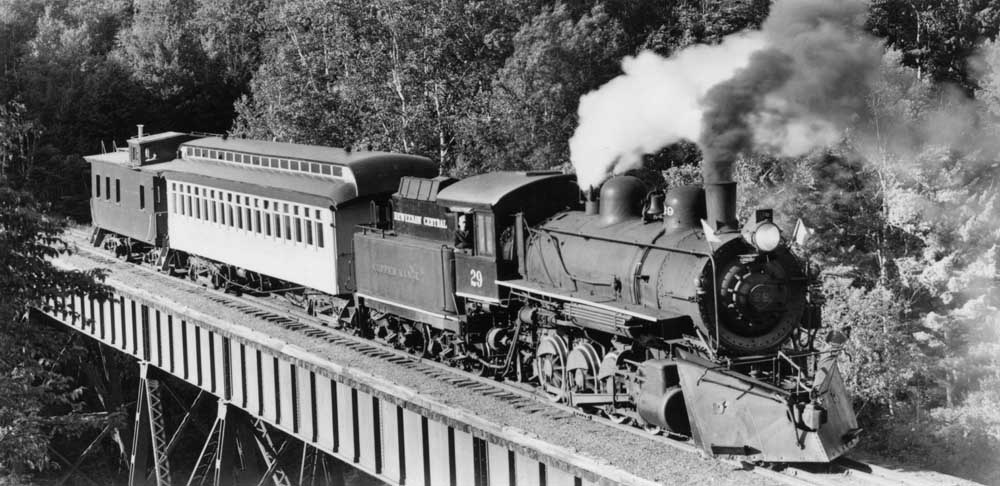
A Keweenaw Central excursion powered by former Copper Range Railroad #29. Alco built the #29 new for the Copper Range in February 1907 as their construction
number 42535, and it served the railroad well until replaced by diesels in 1947. The railroad kept the locomotive in reserve until the Keweenaw Central bought it in 1967. The #29 was susequently stored in an old
smelter in Hancock, Michigan, until 2004, when the Mid-Continental Railway Museum acquired the locomotive and moved it to their facility in North Freedom, Wisconsin, for display.
Trans Northern's search for a new home would eventually consume four long years and end on 29 April 1976 when they signed agreements with the McCloud River Railroad allowing them to set up shop in Algoma, Wisconson,
on the rails of the Ahnapee & Western Railway, which is covered on another page in this section. Trans Northern incorporated the Algoma Railroad to handle operations. The company initially equipped the new
operation with one locomotive, an ancient General Electric 60-ton switcher #105 powered with an Ingersoll-Rand engine, and a pair of former Chicago, Burlington & Quincy coaches, 1916-built #6114 that became
Algoma #14 and 1928-built #6168 that became Algoma #68. Trans Northern also moved their 1928-built Pullman Solarium/Lounge car #100, formerly Erie Mining Company's "Taconite Trail", into Algoma, though it was in
poor shape and would require substantial work before it could be used. Finally, the company brought in an old wood body side door caboose for use as a ticket office, which they parked at the end of the A&W main line. Algoma Railroad operated its first train on 18 July 1976. The excursions originated from the old Algoma depot and travelled the length of the A&W to Casco Junction and return. Each round trip lasted about two hours. The excursion trains did have to closely coordinate their movements with the Green Bay & Western freights, which occasionally resulted in the excursion trains having to significantly delay their departures while waiting for the freights to finish their work and clear the line. 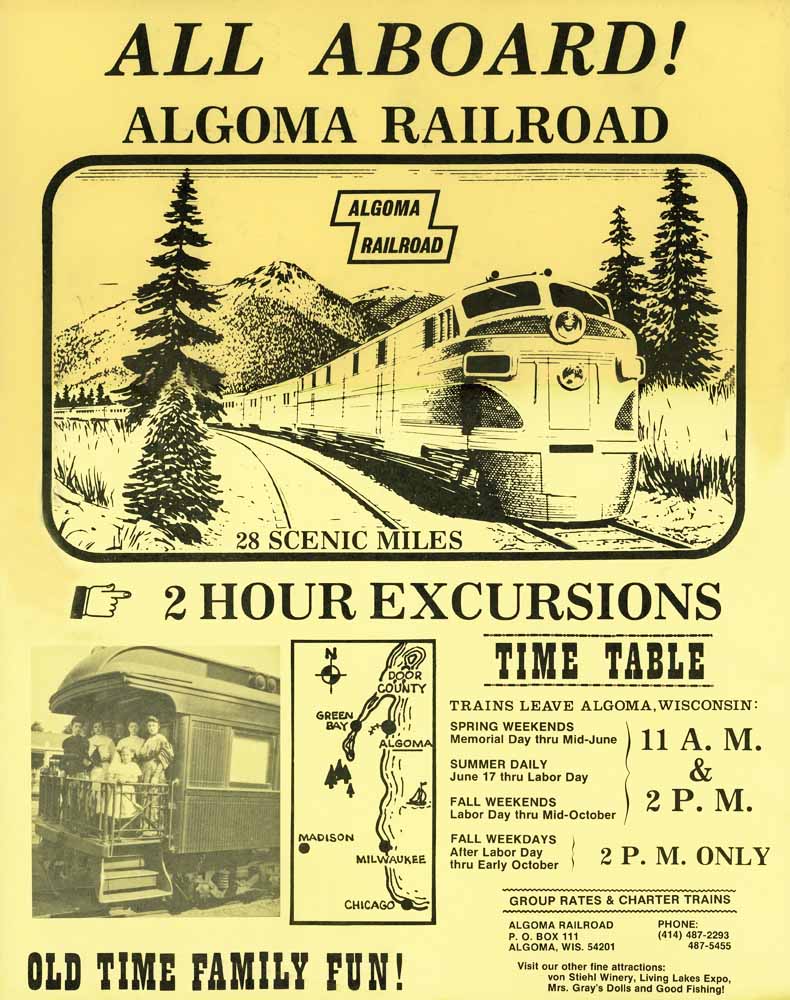
An Algoma Railroad advertising poster. Jeff Moore collection. 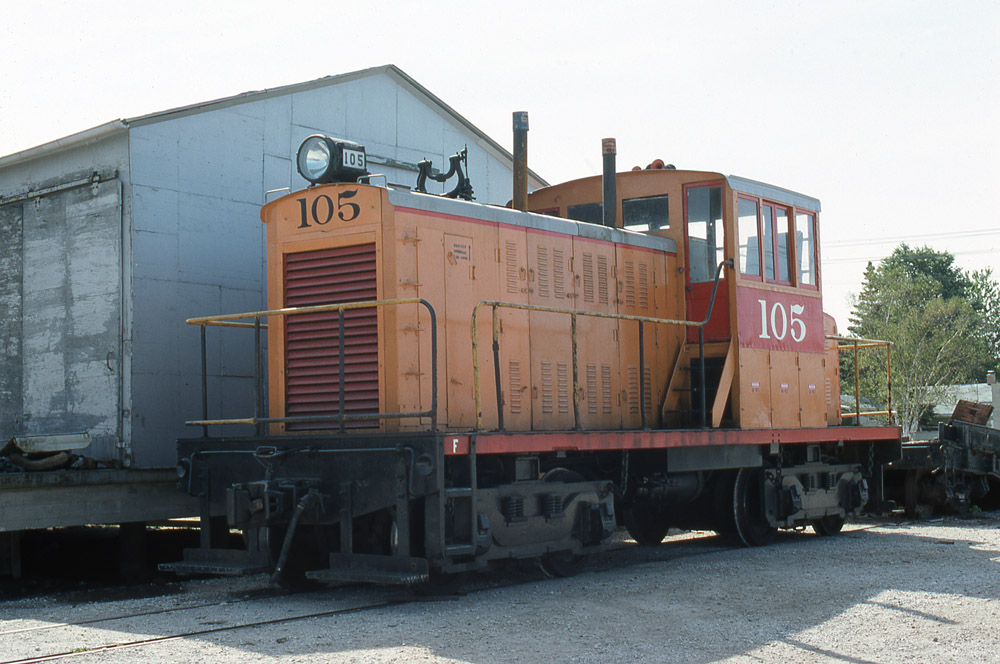
Algoma Railroad #105 in Algoma on 25 September 1976. Phil Tygum photo. 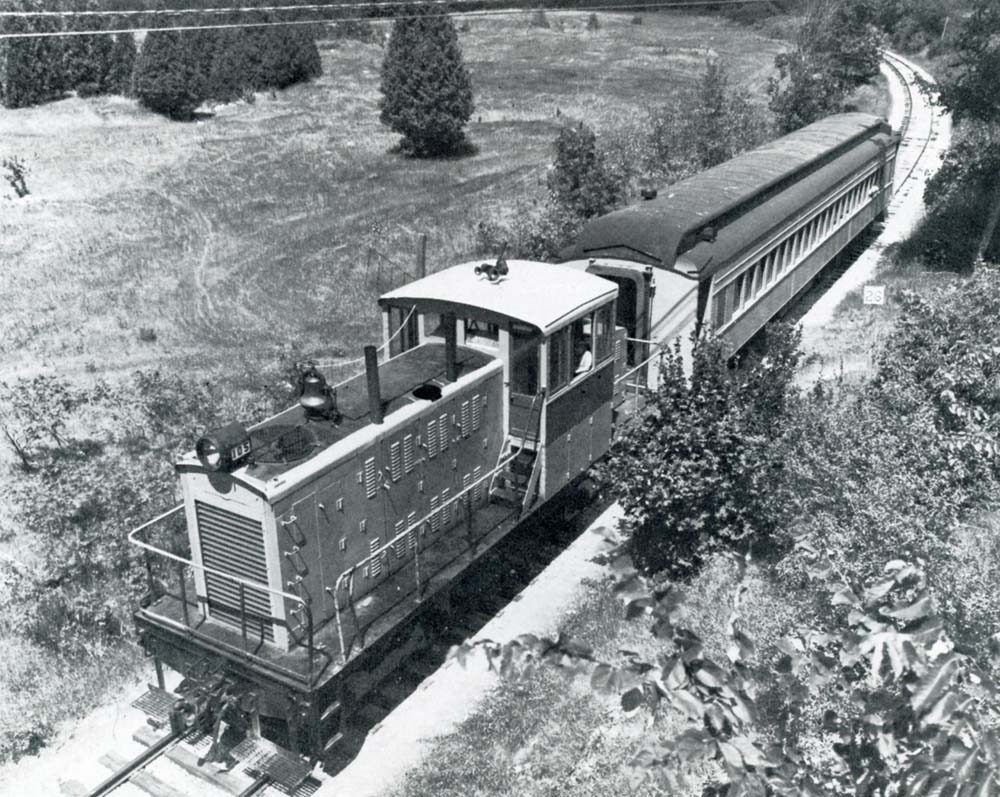
The #105 with an excursion somewhere on the line. Photo is from a small book Trans Northern published on their history and operations. 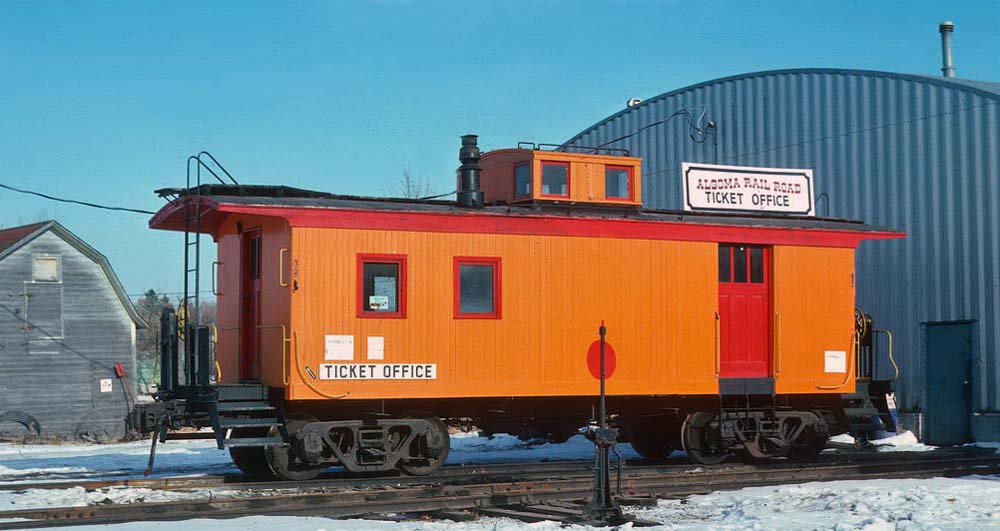
The caboose Algoma used as a ticket office and depot. Andy Laurent collection.
Trans Northern had invested substantial money into the #105 before placing it in service, including installing a new air brake system and radiator core among other items. Unfortunately the unit suffered a catastrophic
mechanical failure after only a month or two of service. Trans Northern quickly found and purchased from the Milwaukee Road their Alco S-4 switcher #818, which became Algoma Railroad #100. The #100 entered service
immediately after arriving on the road, and it kept the trains running through the rest of the 1976 season and then most of the 1977 season. 
Milwaukee Road #818 in Kansas City shortly before its sale to Trans Northern. The Algoma Railroad removed the all weather window and logo from the cab, scrubbed out most of the numbers on the side of the hood, and
placed its #100 in the number boards on the nose but otherwise operated the unit as its seen here. Mac Owens photo. 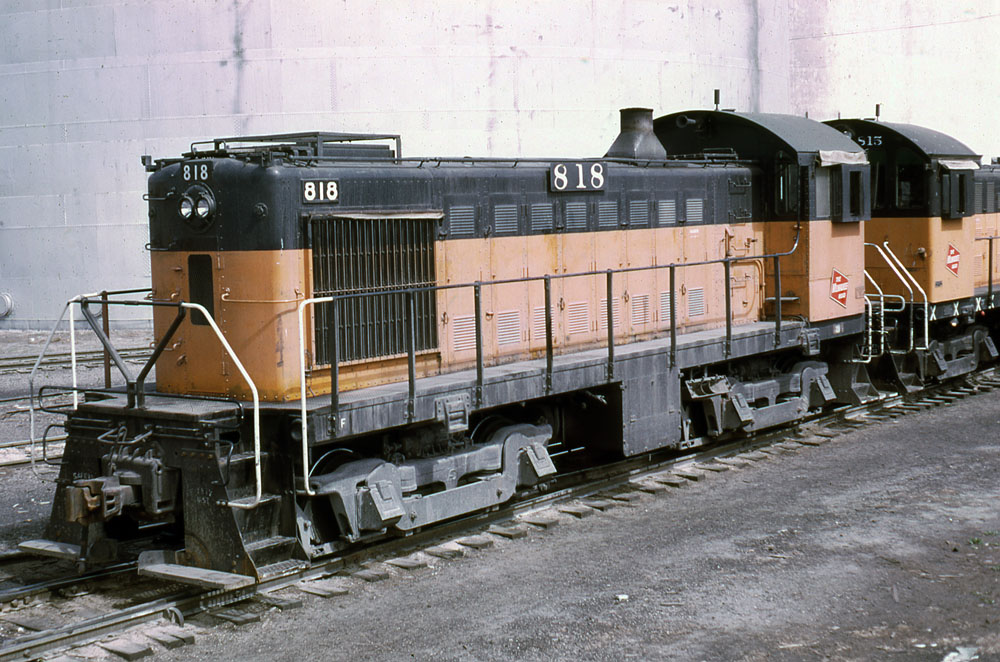
Another uncredited photo of the #818's other side taken circa 1967. 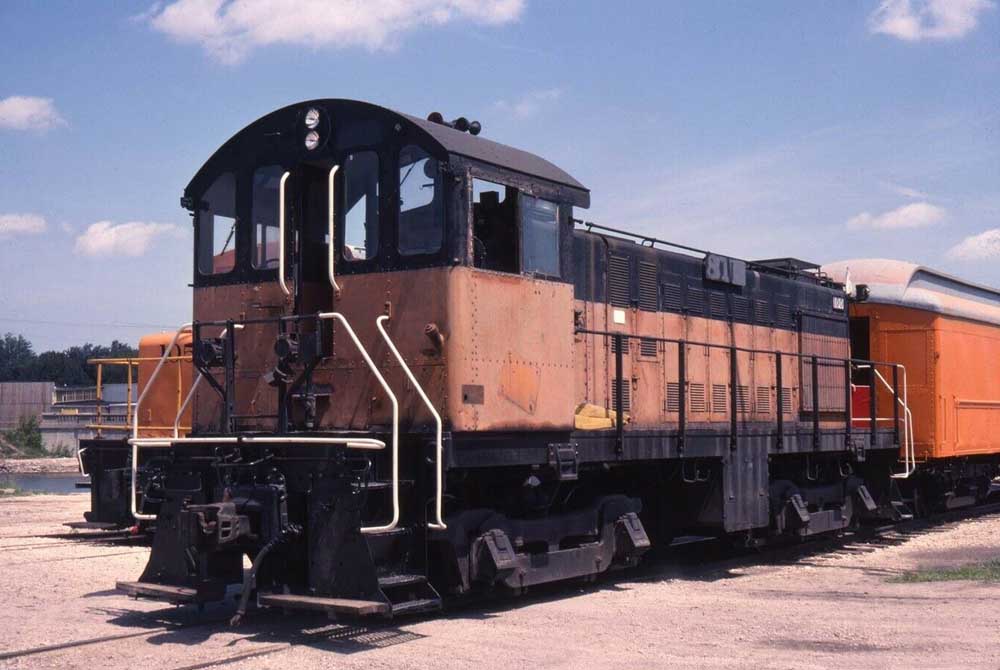
The #100 shortly after arriving on the Algoma. 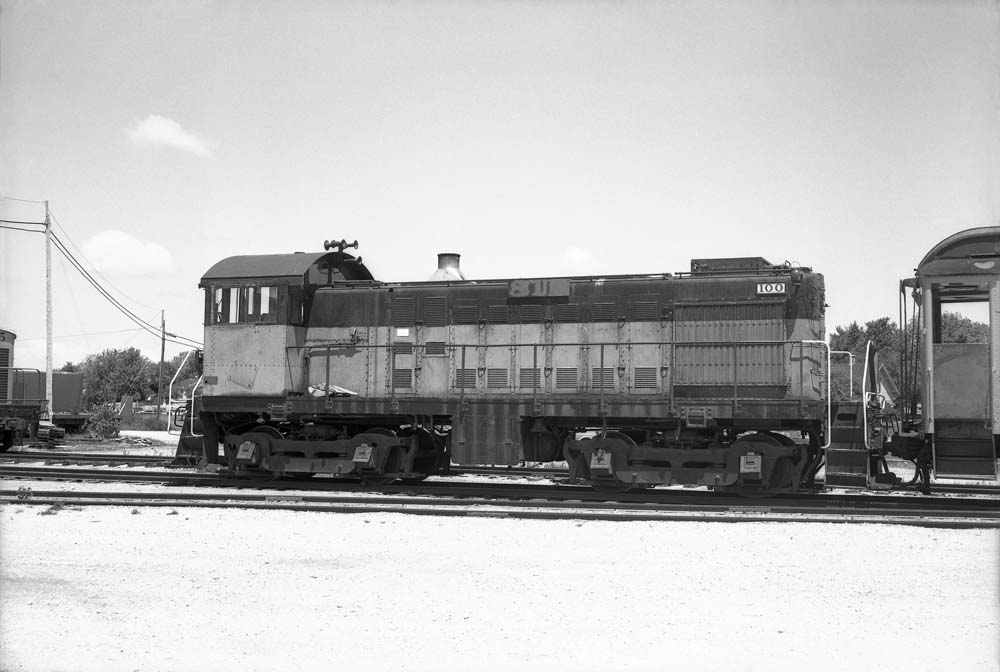
The #100 in Ahnapee on 20 June 1977. Don Christenson photo. 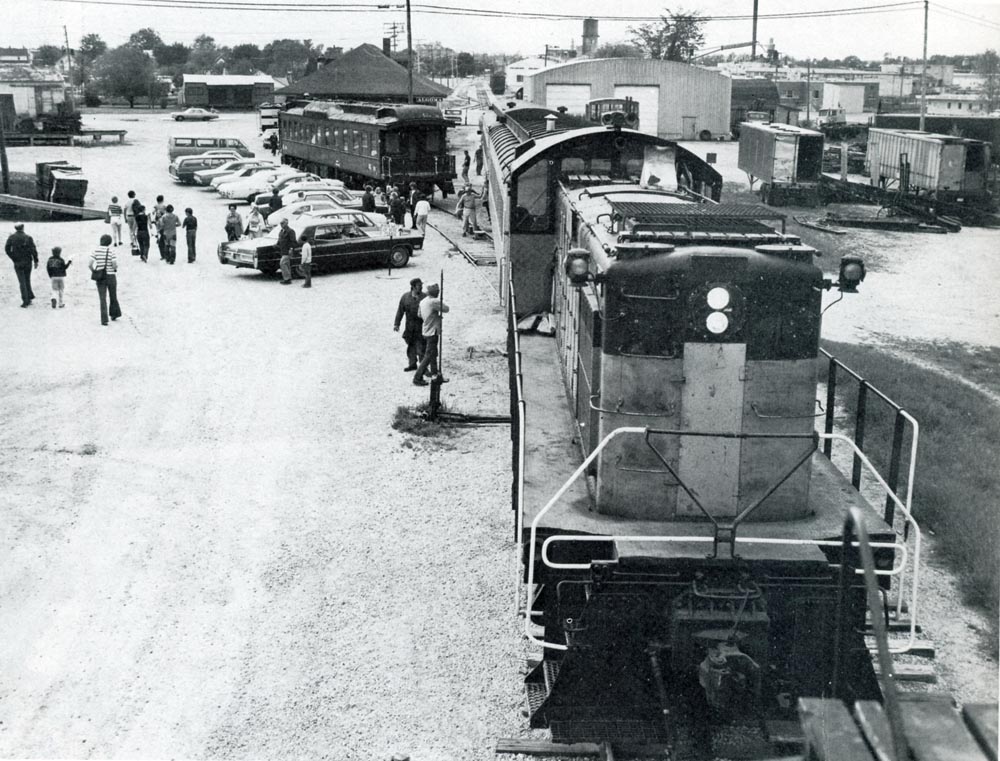
An overview of the Algoma Railroad operations in Algoma in late 1976 or early 1977 shot from the roof of the ticket office caboose. The #100 is on the main line with the two coaches. The "Taconite Trail"
can be seen to the left, with the depot behind it. Across the tracks from the depot the #105 can be seen sitting in front of the old A&W enginehouse. The Hardwood Plant is visible in the right background.
Photo from the Trans Northern history book. 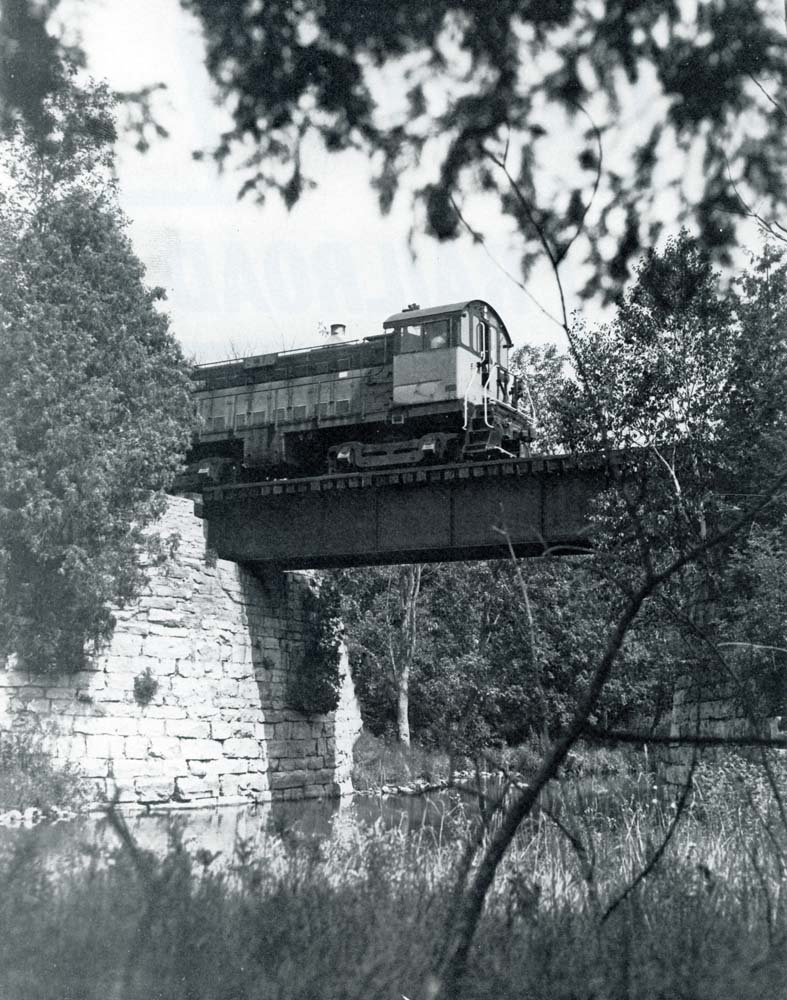
The #100 crossing the Kewaunee River bridge with a westbound excursion train. The AHW when built used a 1,200-foot long trestle to cross the river, but shortly replaced it with a fill and this 50-foot iron bridge.
The road routinely had to dump rock around the abutments to keep them from washing away; it was the eventual failure of the right abutpment in this photo that forced the embargo of the entire line. Photo from
the Trans Northern history book. Trans Northern acquired two additional pieces of equipment for the Algoma Railroad in 1977. The first was the former Soo Line combination baggage and passenger car #1356 that became Algoma #56. The railroad set up a snack and souvenir shop in the former passenger part of the car and installed wooden gates and screening in the baggage doors so that passengers could safely stand in them while the train was in motion. The car proved to be a very popular addition to the train set. 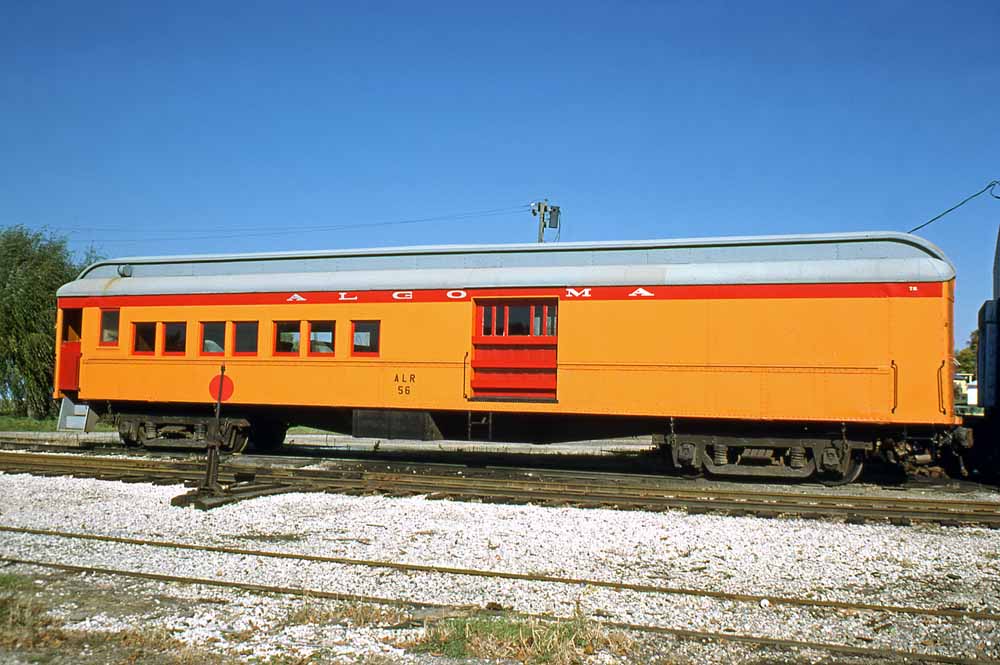
The #56 in Algoma on 27 October 1978. J.M. Siedl photo. 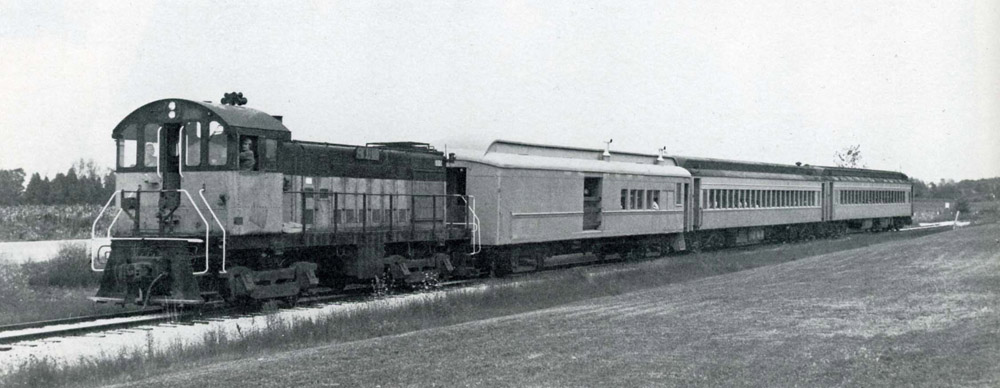
The #100 leads the three car train somewhere on the line. Combination car #56 is the first car behind the locomotive. Photo from the Trans Northern history book. The other piece of equipment purchased in 1977 was another locomotive, the former Milwaukee Road Alco RSC-2 #988. The Trans Northern mechanical staff performed some necessary work on the locomotive after it arrived in Algoma, and it entered service in the late summer or early fall. Trans Northern promptly retired and sold the #100, leaving the #988 to handle all operations on its own. 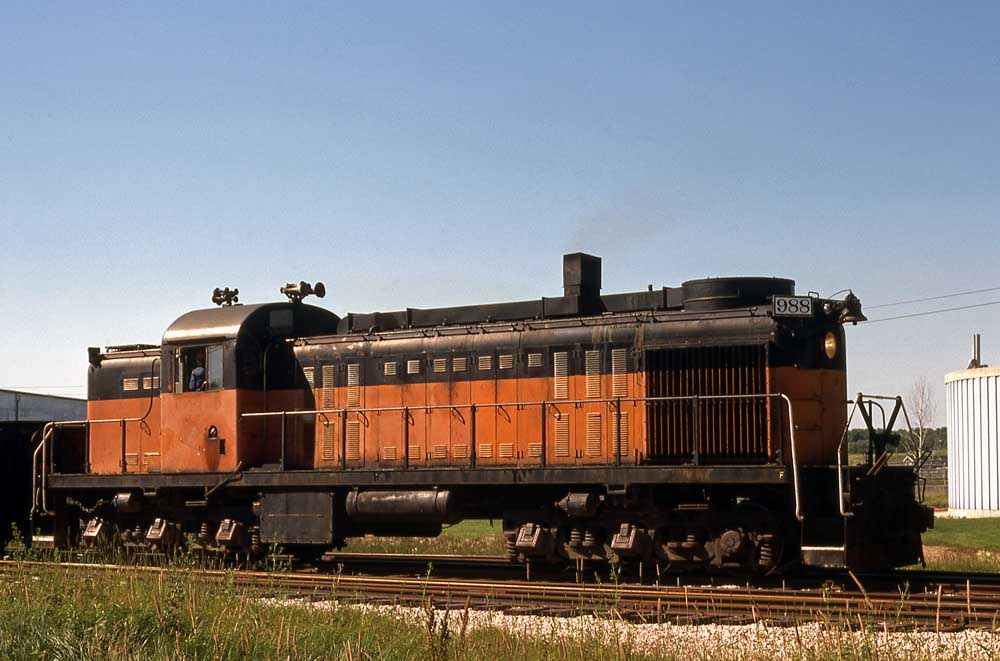
The #988 at Algoma circa 1978. Jeff Moore collection. 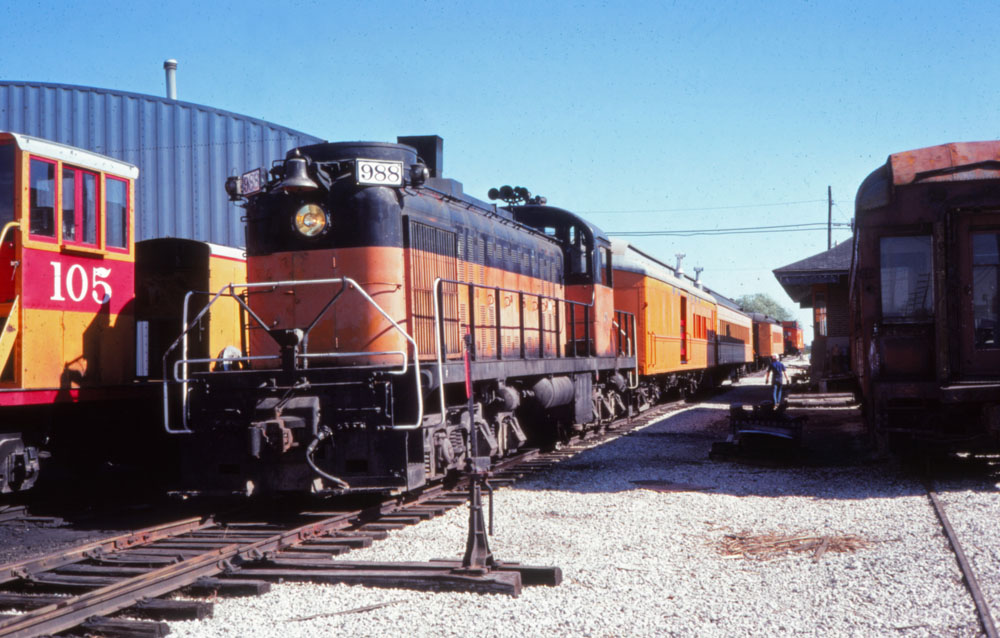
The #988 at the Algoma depot on 4 October 1977. Allan Ramsey photo. 
A second uncredited shot of the #988 at the Algoma depot on 4 October 1977. 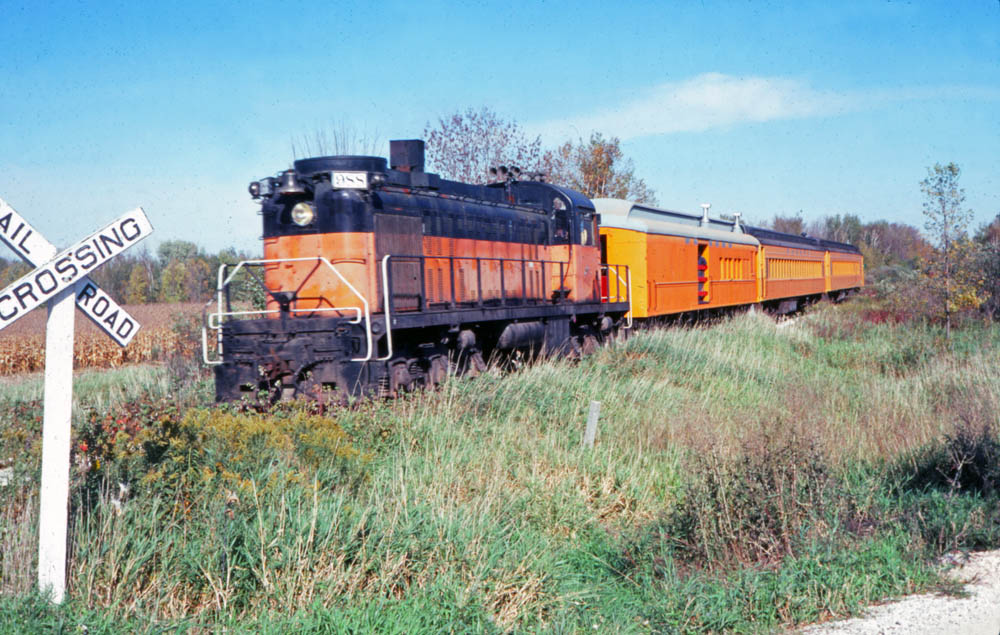
The #988 powering an Algoma Railroad excursion train through the Wisconsin country side on 4 October 1977. Allan Ramsey photo. 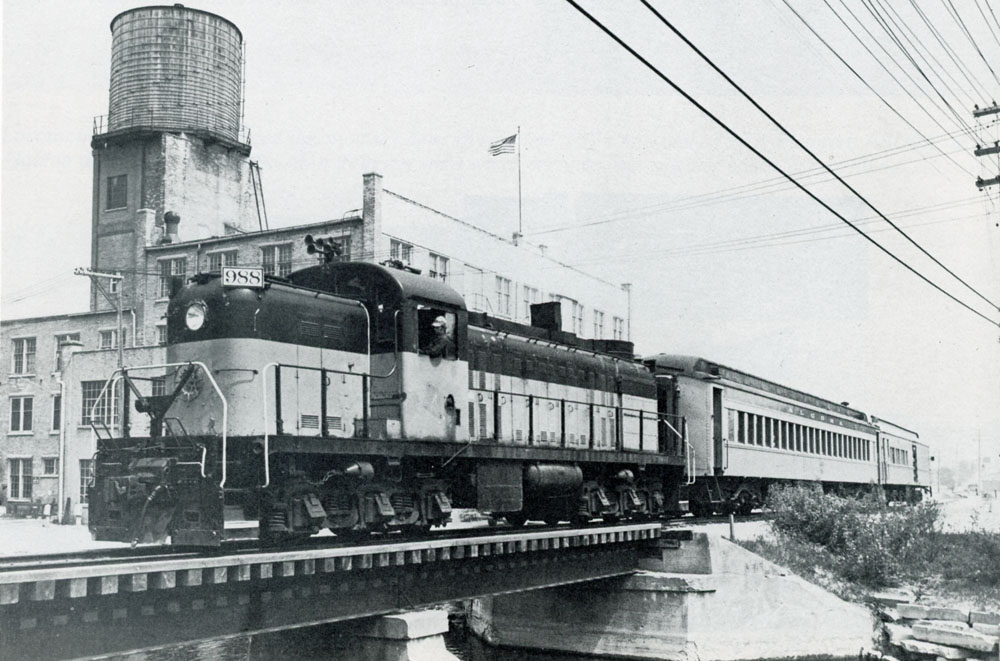
The #988 powers a two car train through Algoma shortly after its arrival on the railroad. Photo from the Trans Northern history book. The Algoma Railroad had a third successful year in 1978. Trans Northern purchased another locomotive and two passenger cars for the Algoma Railroad in that year. The locomotive was a 1930-built Westinghouse 78-ton switcher, while the coaches were the 1928-built former CB&Q #6167 that became Algoma #67 and a 1934-built former Milwaukee Road coach that became Algoma #4410. All three required substantial work before they could be placed in service. Otherwise the railroad operated as it always had, running from Algoma to Casco Junction and back. Trans Northern expanded their operations in 1978 when they set up the Brillion & Forest Junction Railroad on 6.7 miles of former Chicago & Northwestern track that had been purchased by the local shippers and then contracted to Trans Northern. The two railroads shared resources as needed. 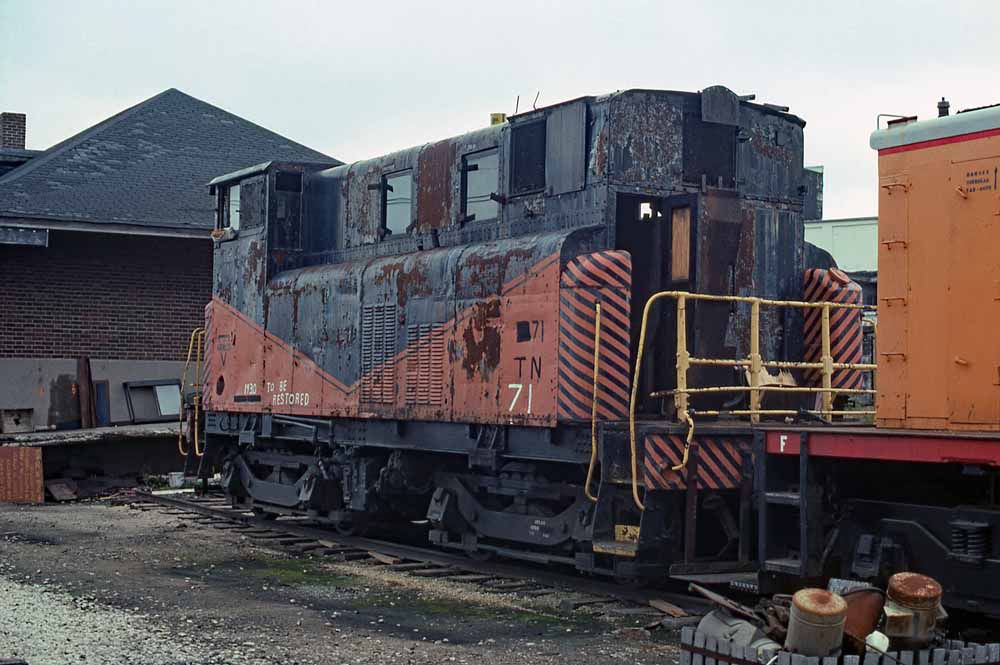
Trans-Northern #71, the locomotive acquired in 1978, sitting next to the Algoma depot in company with the out of service #105 which was missing some handrails by this point. Algoma never got the "To Be Restored" promise
fulfilled during the brief remaining life of the Algoma Railroad. Thomas Moremann photo. 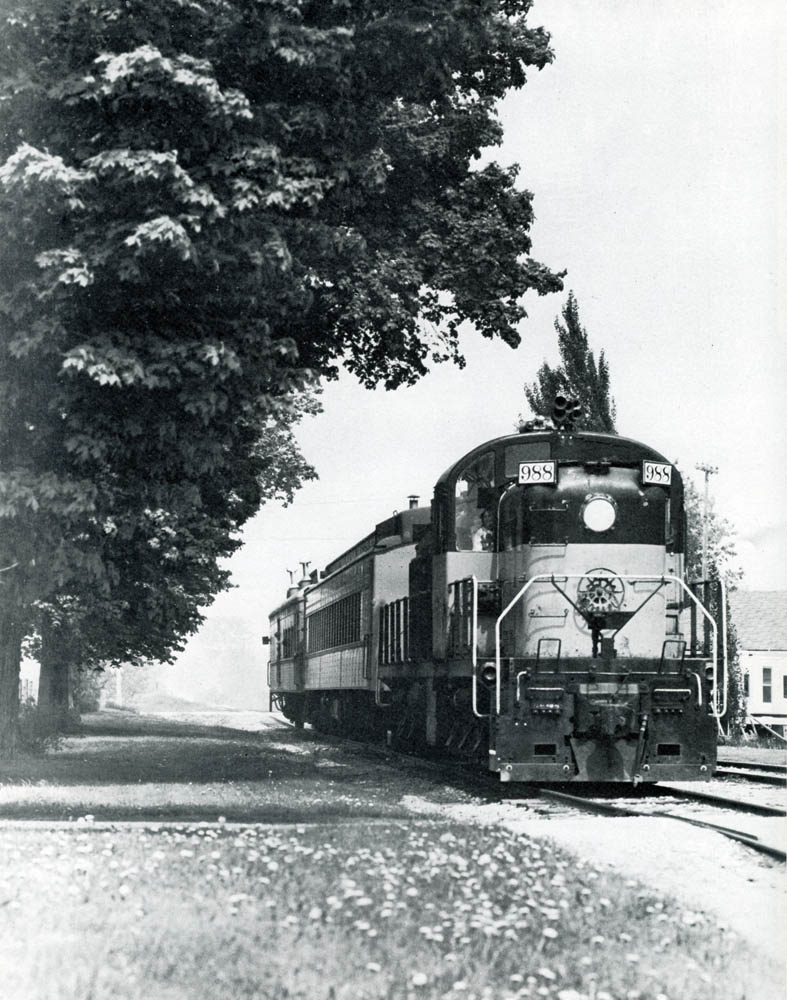
The #988 with an excursion train, probably in Rio Creek. Photo from the Trans Northern history book. 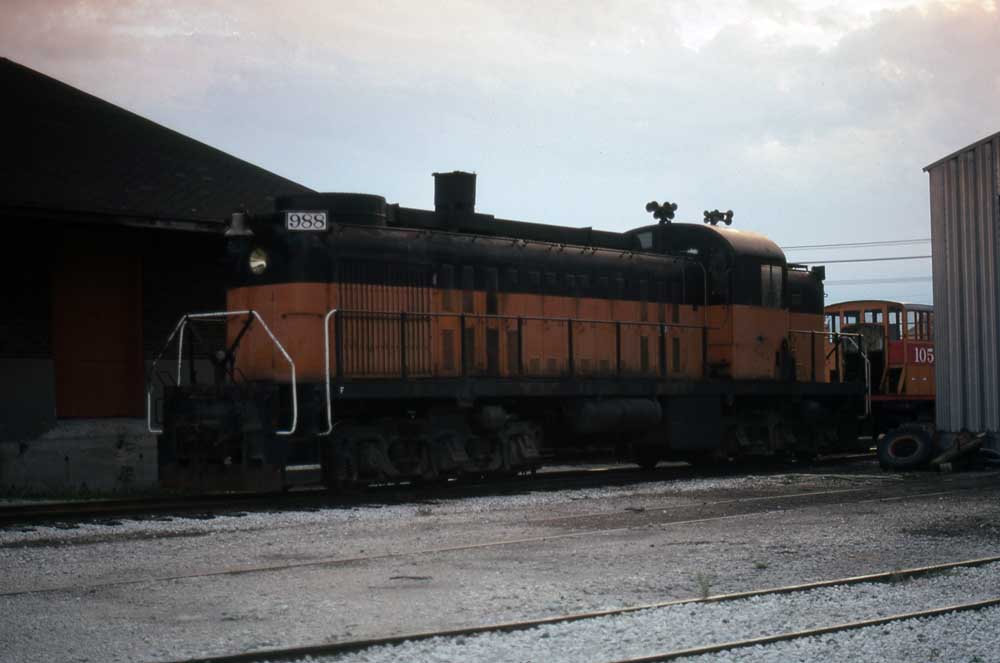
The #988 in front of the Algoma depot on 16 September 1978. Note the #105 is in the process of being scrapped in the background. Jeff Moore collection.
The year 1979 started with a lot of promise for the Algoma Railroad. Trans Northern had many plans for the railroad under consideration, including renovating the "Taconite Trail" for special use on the excursions and
restoring to operation one of the steam locomotives it owned, the former Chicago & Northwestern 4-6-0 #175, which had been built by Alco in 1908 as their c/n 45727. Unfortunately none of these plans came to pass.
Tourist railroads of all stripes faced trying times in the late 1970s, inflicted mostly by skyrocketing insurance costs and declines in overall tourism activity driven by the stagnant economy and ever higher gasoline
prices. In addition, Trans Northern had become interested in another new expansion opportunity, twenty-nine miles of soon to be former Milwaukee Road trackage between Eau Claire and Durand, Wisconsin, and likely
concluded it needed the physical and financial resources invested in the Algoma railroad to launch its new Chippewa River Railroad on that line. The Algoma Railroad closed for good after the end of the 1979 season. 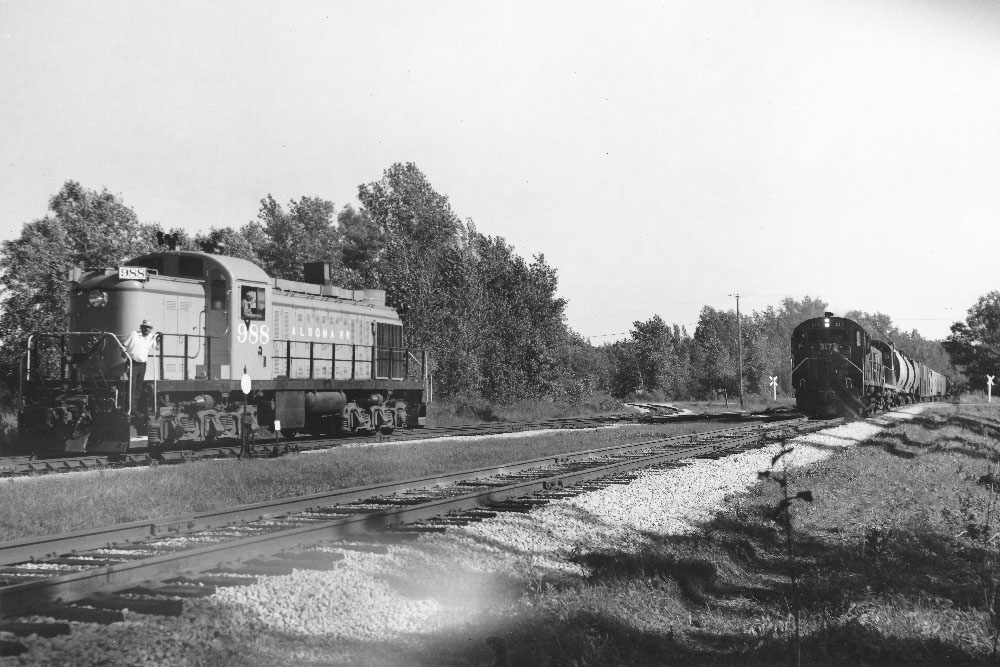
The #988 meeting a GB&W freight at Casco Junction in September 1979. Note that the Algoma Railroad has repainted the #988 into the Milwaukee Road's original yellow and gray paint by this point, colors that were
very similar to those worn by McCloud River's first two Baldwin diesels. Stan Mailer photo. 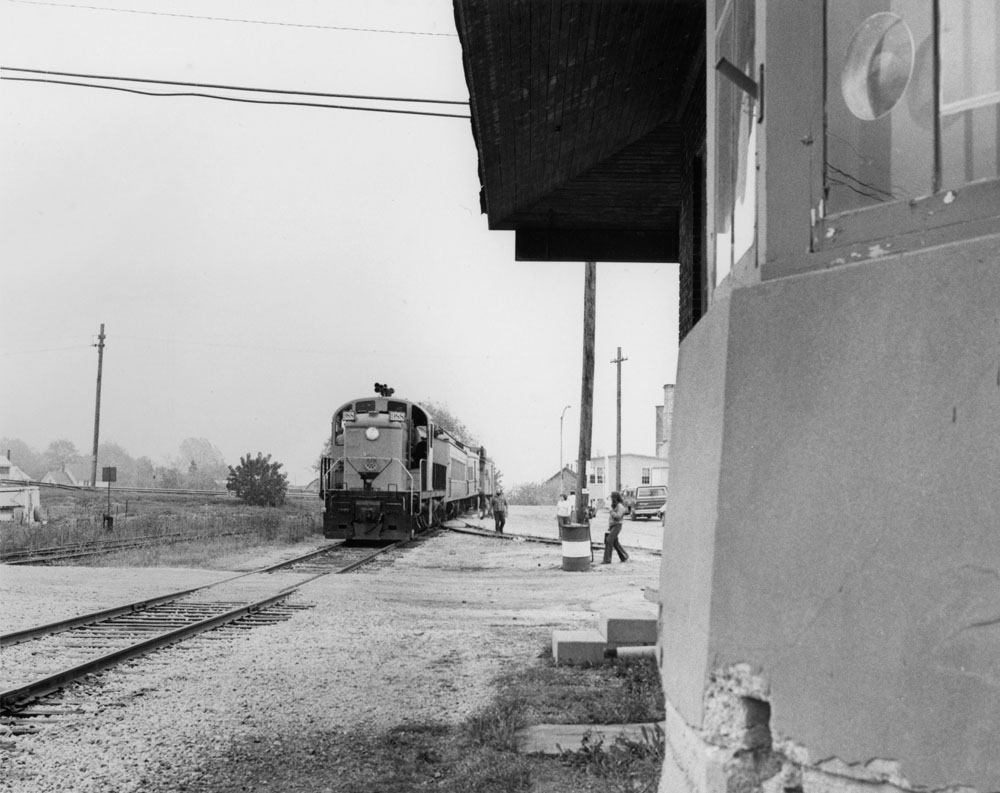
The #988 is seen here pulling an Algoma Railroad excursion train out of Algoma on the railroad's last day.
Trans Northern removed its equipment from the A&W by early 1980, bringing to a close an interesting operation. The #988 moved on to the Chippewa River Railroad, which launched on 1 April 1980, but despite its best
efforts Trans Northern could not overcome decades of deferred maintenance on the line, and operations ceased by 16 Juanary 1981. Trans Northern abandoned the railroad shortly thereafter, the the grade is now the
Chippewa River State Trail. The company continued operating its Brillion & Forest Junction until its abandonment on 4 April 1985 after the operating contract ended. At least one of the primary people behind
Trans Northern now runs the Mineral Range Railroad in Ishpeming, Mischigan. Locomotive Roster 71- Westinghouse "Visibility Cab" switcher, Baldwin c/n 61401, Built November 1930. Originally American Rolling Mill Company #B-71, Butler, PA; Donated 1966 to Michigan Railway Historical Society and subsequently leased to Cadillac & Lake City Railway, Lake City, MI, where it last operated in 1973. Moved to Hillsdale County Railway, Jonesville, MI, and placed up for sale. Acquired by Trans Northern 1978 and moved to Algoma for planned restoration and operation. By 1985 the locomotive had been moved to the Minnesota Transportation Museum where it became involved in a lengthy and confusing extended period of conflicting ownership claims not resolved until 2010 when Youngstown Steel Heritage Foundation acquired the locomotive, but eventually deeded it back to MTM after being unable to find a home for it. Illinois Railway Museum acquired the relic in 2016 and moved it to their facility where it is undergoing cosmetic restoration. 100- Alco S-4, c/n 78855, Built October 1951. Originally Chicago, Milwaukee, St. Paul & Pacific #1884, then #811, and finally #818. To Trans Northern in either July or September 1976. Sold October 1977 to Precision National and subsequently scrapped. 105- GE 60-ton, c/n 12237, Built October 1937. Powered with an Ingersoll-Rand engine. Originally Milwaukee Solvay Coke Company #105; to Miller Compressing Company #105 February 1970; to a Milwaukee scrap dealer; to Trans Northern 1975. Retired after suffering a major mechanical failure in 1976 and subsequently scrapped. 988- Alco RSC-2, c/n 75134, Built February 1947. Originally Chicago, Milwaukee, St. Paul & Pacific #988, then #594. To Kettle Moraine Scenic Railroad #4 1976; to Trans Northern #988 1977. To Chippewa River Railroad after Algoma Railroad folded in 1979, then stored on the Escanaba & Lake Superior Railroad after the CR failed in 1981. Several members of the Mid-Continental Railway Museum in North Freedom, Wisconsin, purchased the unit in 1986, and its been since conveyed to the museum where it resides today. 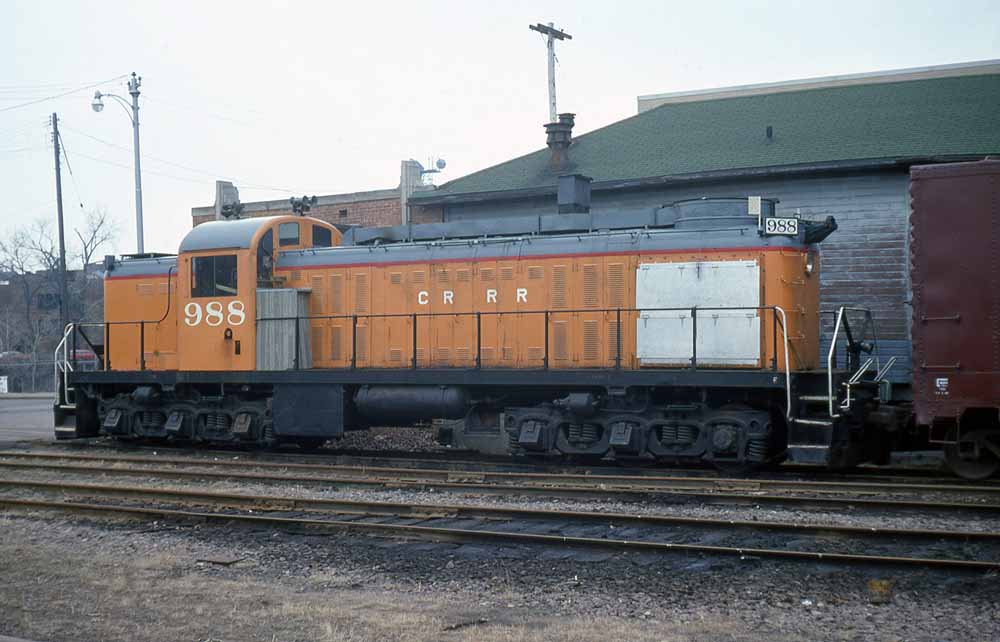
Chippewa River Railroad #988, formerly Algoma #988, at Eau Claire, Wisconsin, in 1981. The locomotive is wearing the early Milwaukee Road scheme Trans Northern applied to it in the final year or two of
Algoma operations. Unknown photographer, Jeff Moore collection. 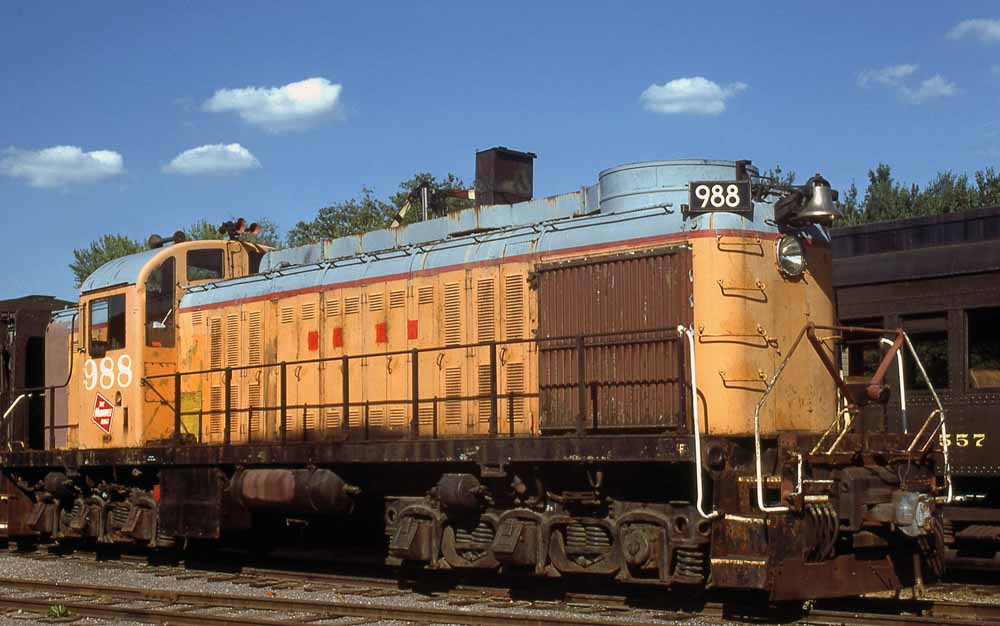
The #988 is seen here at the Mid-Continental Railroad Museum in July 1988. The paint job Algoma applied was badly fading by this point. Hugh P. Blamey photo. 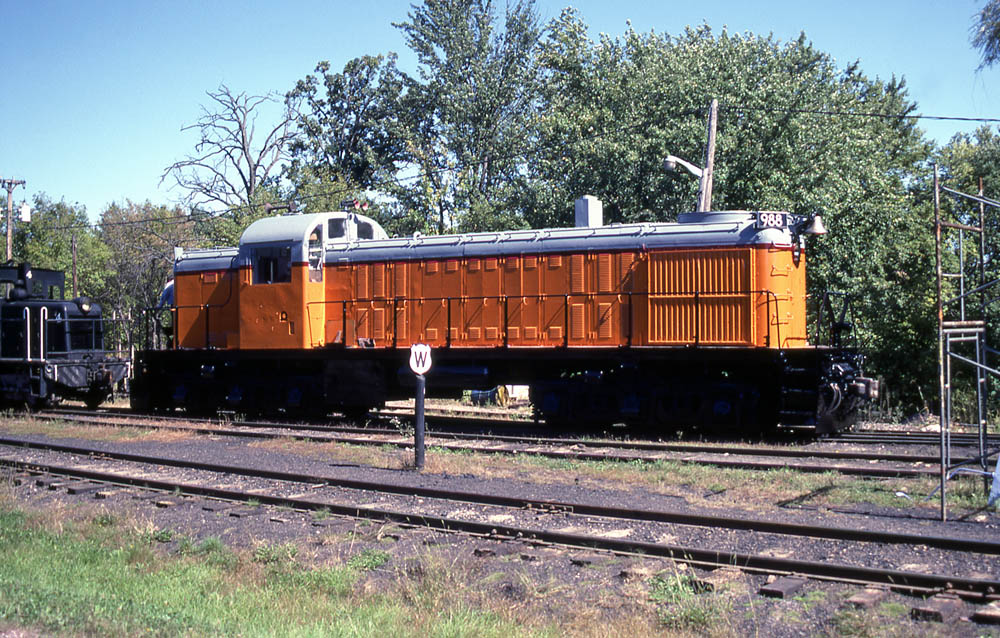
The #988 again at the Mid-Continental Railroad Museum on 24 September 1989, shortly after being repainted. Francis J. Wiener photo. 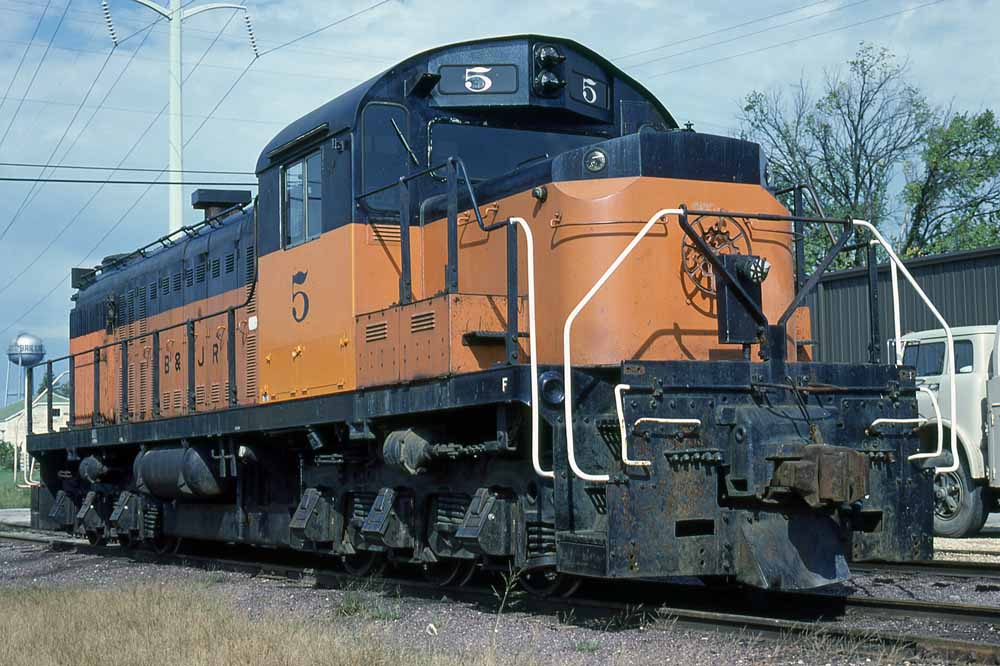
Sole power on Trans Northern's Brillion & Forest Junction Railroad started out as a twin to the #988. Alco originally built it in February 1947 as their c/n 75129 as Milwaukee Road RSC-2 #985:1, renumbered
6/1959 to #591. Alco rebuilt the unit in 2/1965 into a RSC2.5, at which time MILW renumbered it #578. The locomotive got the chopped short hood during the rebuild. MILW sold the unit to Kettle Moraine Scenic
Railroad #5 1976, who sold it to Trans Northern/B&FJ #5 1978. After the B&FJ closed in 1985 the Paperton Junction Southern Railroad in Arkansas bought it and then apparently scrapped the unit sometime around 2008.
Karl C. Henkels photo. |
|
|
|
Special thanks to Mark Mathu and Andy Laurent for their help with some information on this page. Other information gleaned from various sources, including corporate records, regulatory filings, Shortline Railway guides, and the book "Algoma Railroad" written by George A. Forero Jr. and published by Trans Northern in 1979. Links to other websites of interest. Pages will open in a new window. Algoma Railroad excursions in Circa 1976 and 1978. More photos of the Algoma Railroad can be seen here, here, and here. |
|
|